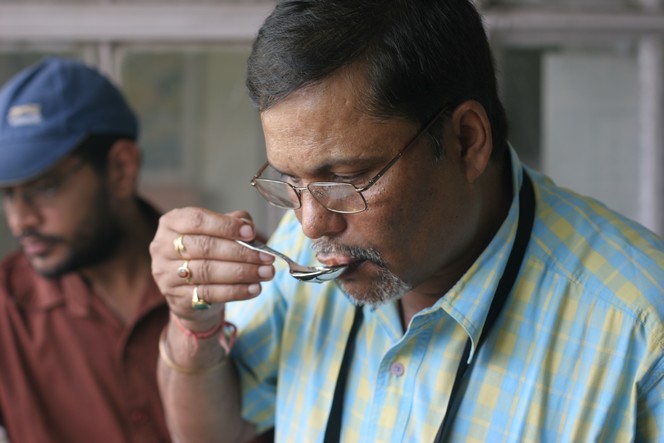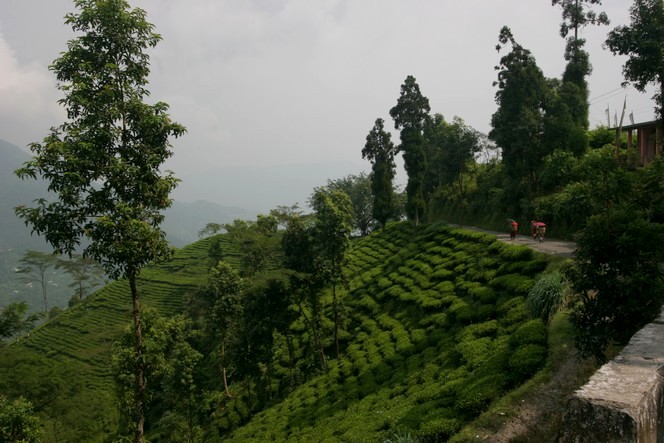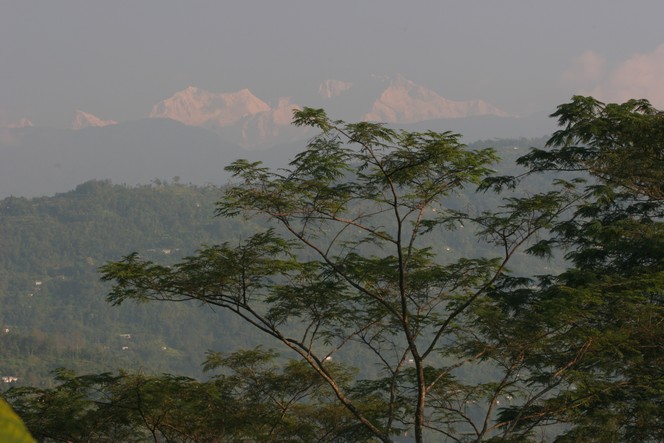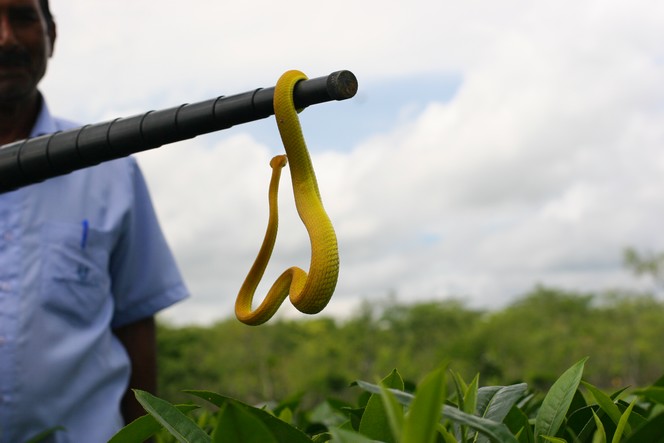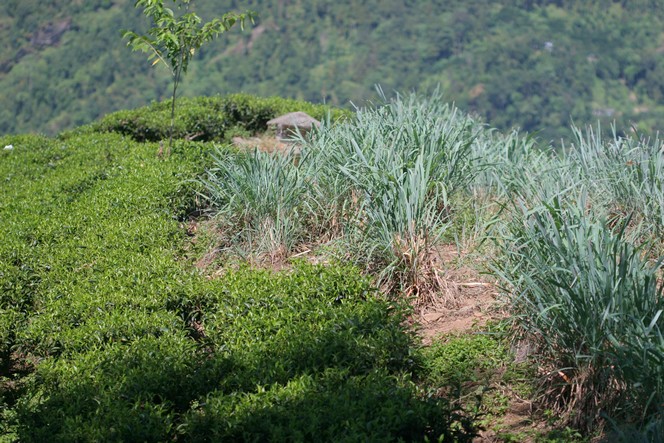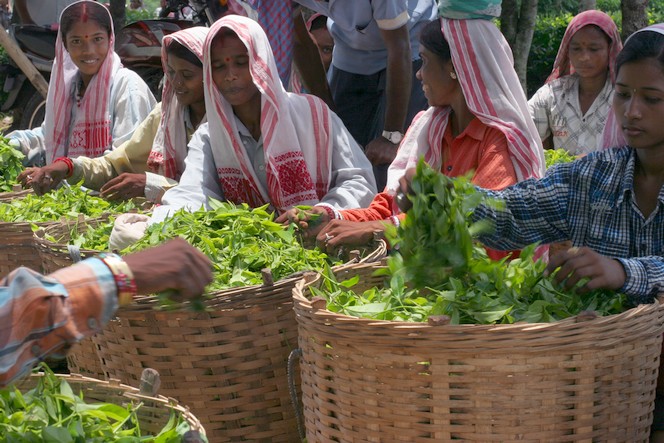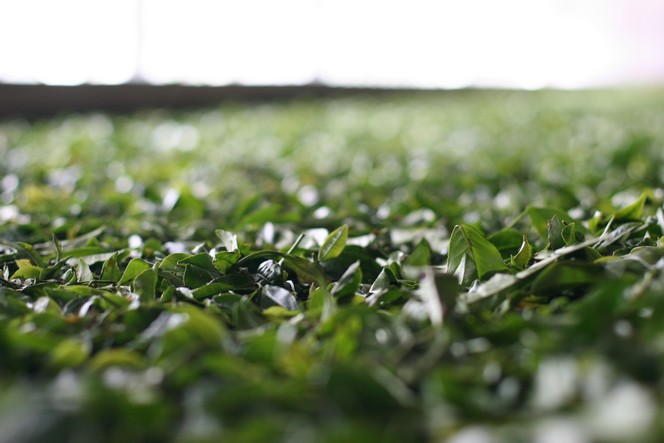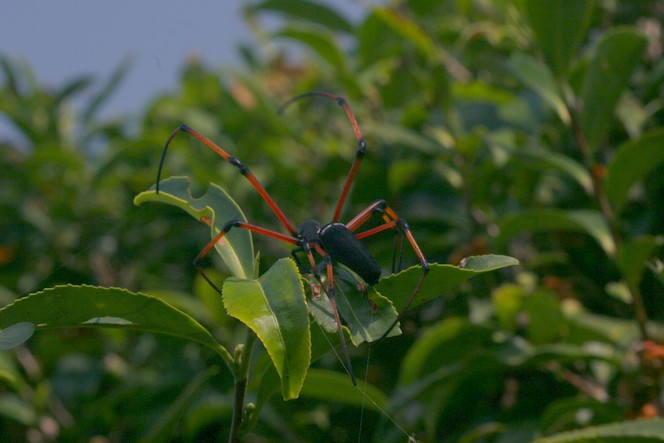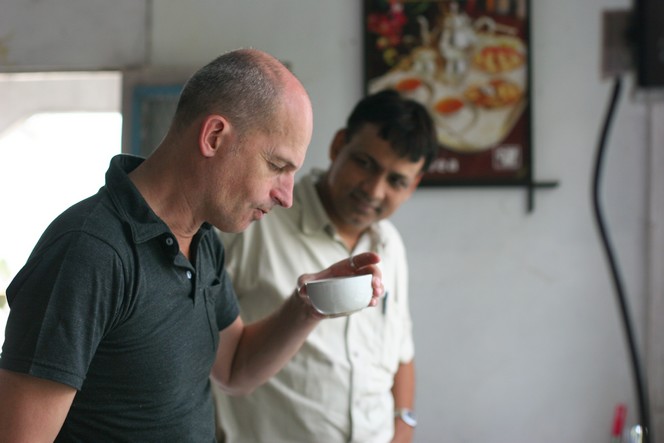A few weeks ago I introduced you to a creature which, while not exactly loveable, is highly admirable. On my French blog, someone said it might belong to the Nephila family, others said it could be one of the Theridiidae or Nicodamidae families. After seeing the many comments you left, I’ve decided to introduce you to another creature today. Equally elegant, I encountered it recently after it slid silently between the branches of a tea bush, just level with my waist. Tea bushes are planted close to each other to make harvesting easier, which means that when you decide to venture into the middle of the field, your feet are completely hidden from view. So you walk looking straight ahead, moving as best you can. You don’t take any notice of the many beasts living in these humid conditions.
Here in Assam, while I was holding back the branches of the shrubs to clear my path, the man behind me stopped me suddenly because he’d seen something yellow near my left arm, undulating beneath the foliage. Once I’d got over my surprise, I turned my head slowly, moving as little as possible so that the animal would never imagine I was anything other than an ordinary tree trunk, to avoid stressing it unnecessarily.
A few minutes later, my companion showed me this fine-looking snake on the end of his stick so that I could take its photo, and now I’d like to know its name. It was as beautiful as a rare jewel and as supple as a necklace, and it gleamed like gold. Before leaving us, overcome by shyness, the snake took the time to make something resembling a heart shape with its body, a way of asking us to respect all the love that nature offers us.

